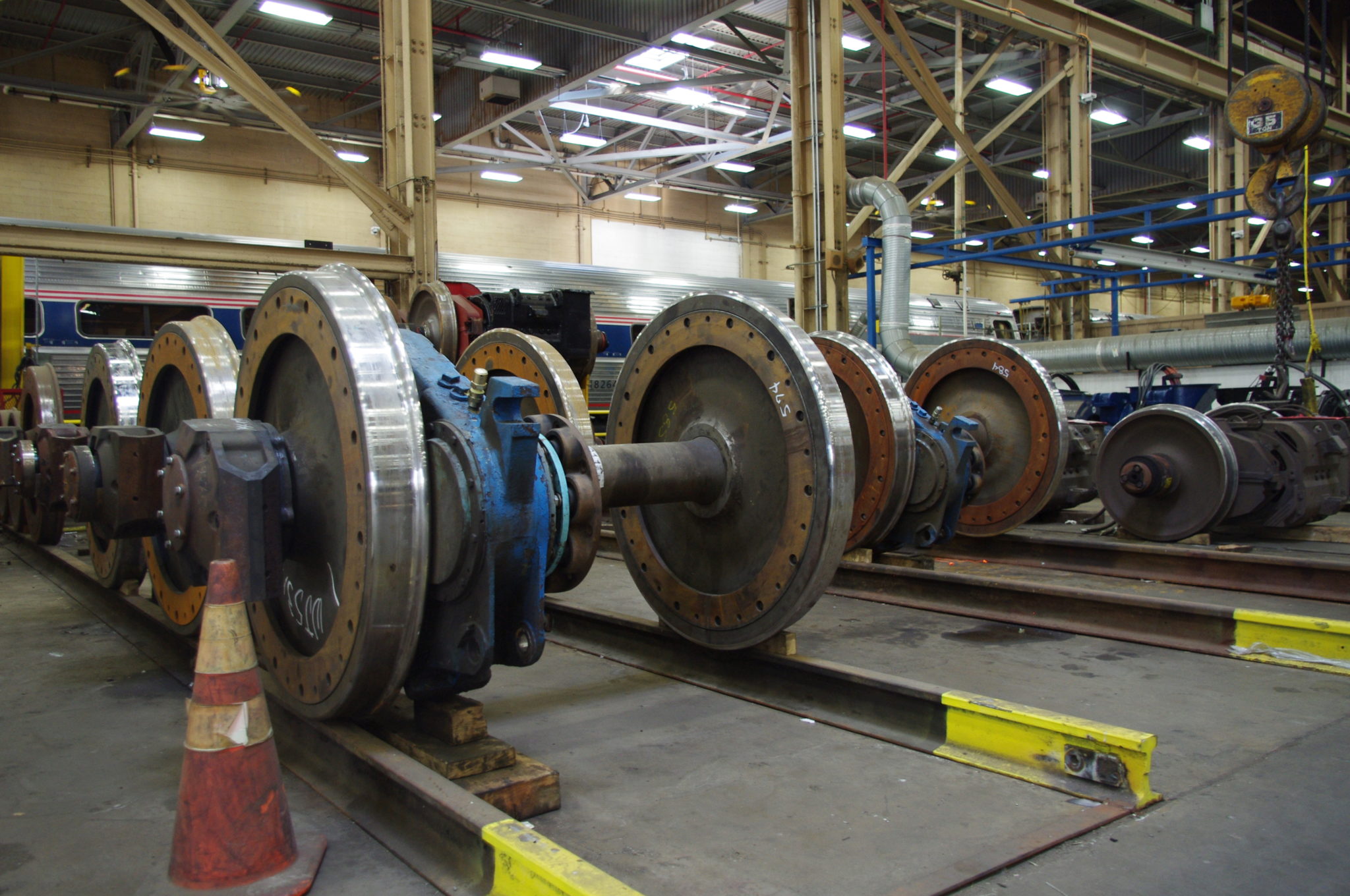What Happens When You’re Not on Your Train?
There’s a lot that goes into keeping your train in good repair when you’re not riding it. Ever think about how we refuel, wash the windows or replace the wheels? Most light train maintenance happens at our designated 24-hour maintenance facilities.
There are several of these facilities across the country in places including Wilmington, Del., Beech Grove, Ind., Washington, D.C., and Chicago. Here’s an example of what happens when you’re not riding the train.
Our diesel locomotives are refilled after every run at fueling stations where they’re also inspected. According to U.S. Department of Energy data, Amtrak is almost 14 percent more efficient than domestic airline travel and 31 percent more efficient than auto travel on a per-passenger-mile basis.
After keying in the locomotive’s number and beginning the fueling process, employees wash the train’s windows of debris then climb tall train-side platforms for a deeper scrub.
This Engine House is buzzing with activity. This is where “road battle” repairs for locomotives like the HHP 656 are carried out around the clock. Those include damages from tree branches along the railways or dings from debris. Federal Railroad Administration regulations dictate that the locomotives must be inspected every 92 days and also are subject to more rigorous annual inspections each year.
A common repair is the removal of flat spots from wheels. These wheels have had their flat spots removed and are ready to return to service. This makes changing the wheels on your car look easy, doesn’t it?
Each day about 130 train cars are cleaned and prepped for their next trip in this maintenance facility. That process includes restocking sink soaps, vacuuming the aisles and draining waste from on-board bathrooms.




